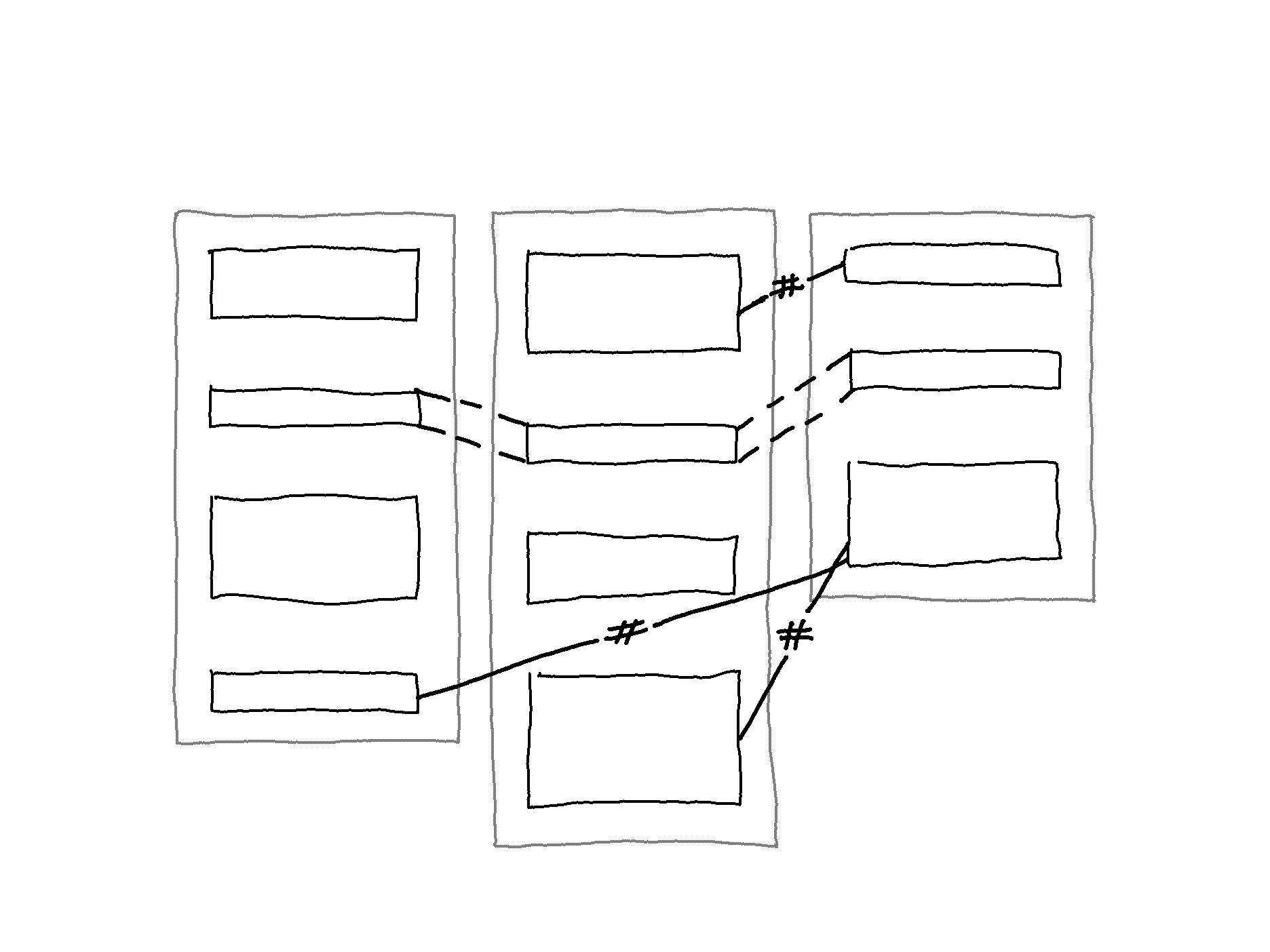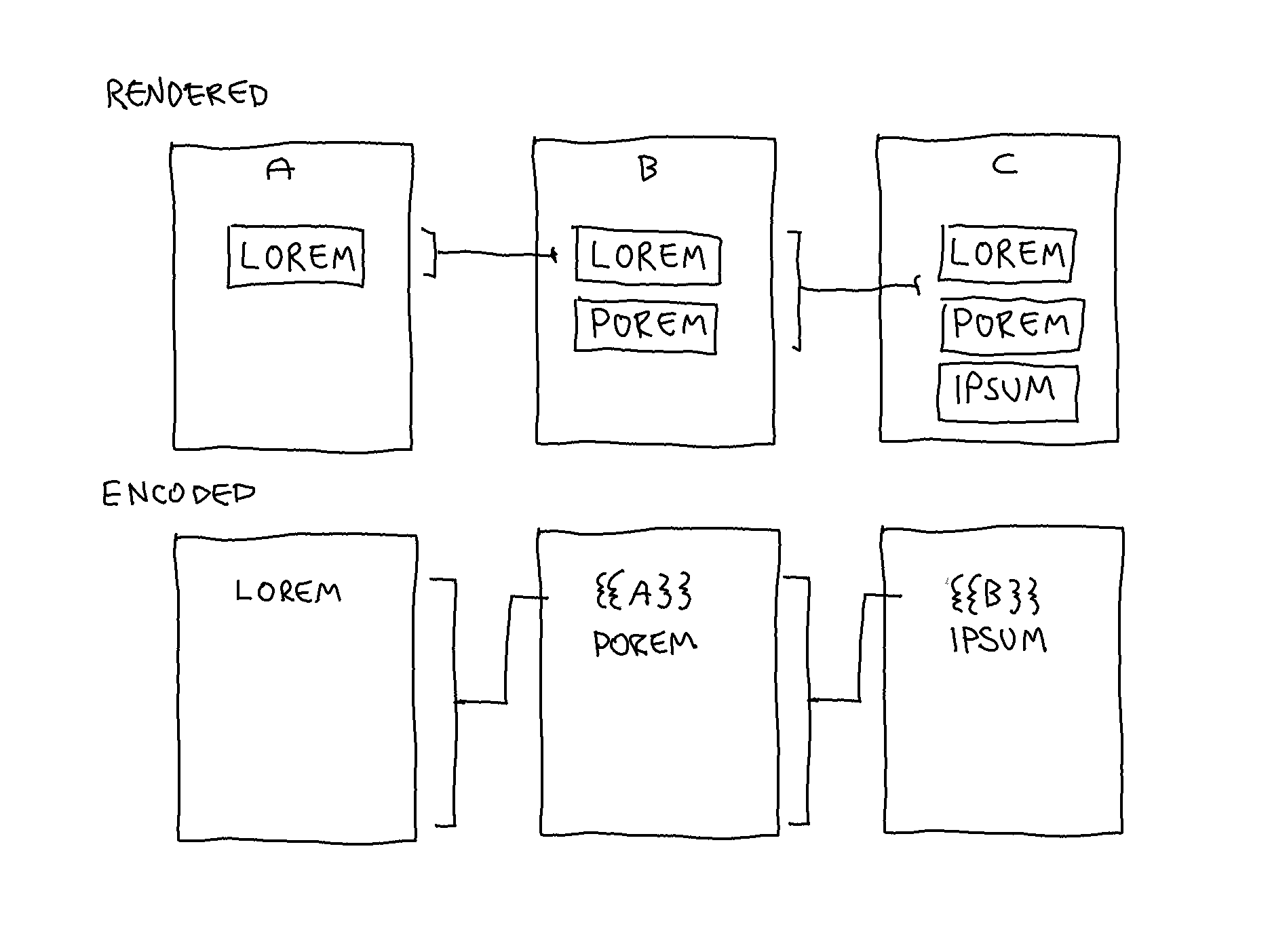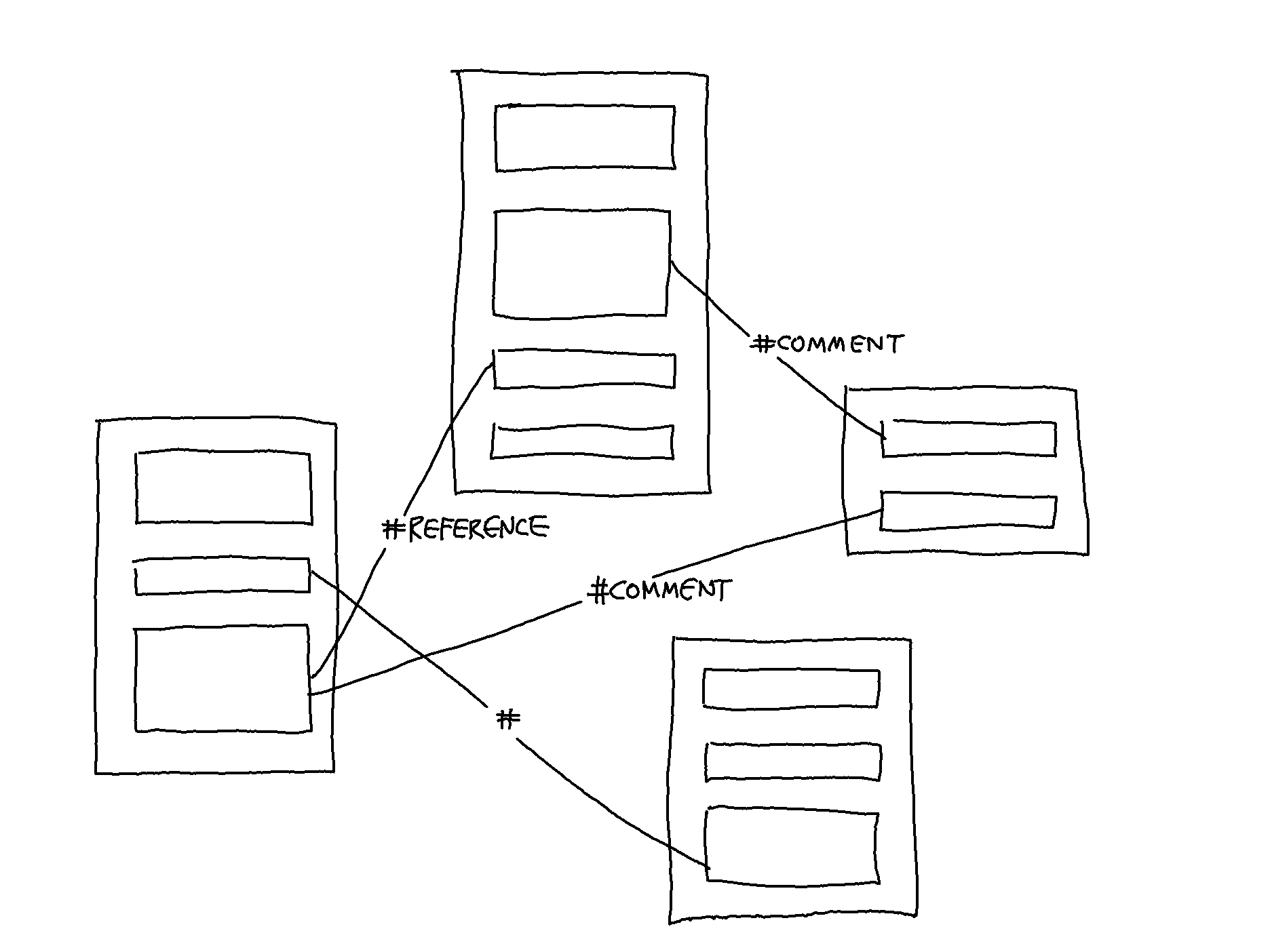Concept Design: Link Types
Questions are:
- What constitutes a document?
- How are links attached?
- What link types?
Documents, Content Items, and Link Types
A document is a container of (one or many) content items to which links can be attached (on the content item or document level). Two main link types can be established between content items: transclusions and non-transclusions — now called taglinks.
- Transclusion —-
- Taglink –#–

1. Transclusion —-
Transclusion is the inclusion of (a part of) a document into another document.1 When a content item is reused in another document, a visual (transclusion-type) link is automatically created, offering a way to retrieve “the origins and context of quotations, excerpts and anthologized materials, and content transiting between versions” (Nelson 1999).
The image below shows the concept of transclusion on a technical level.

2. Taglink –#–
A taglink is any arbitrary conceptual connection created between (a part of) documents and can include a descriptive label (#Label) or remain empty (#). Utilizing the common usage of hashtags,2 taglinks enable the organization of links based on any taxonomy. Examples of taglinks are given below.

The link types and the view modes developed so far are explored in a prototype in the next entry.
Sources
Nelson TH. Xanalogical Structure, Needed Now More than Ever: Parallel Documents, Deep Links to Content, Deep Versioning, and Deep Re-Use. ACM Computing Surveys. 1999;31(4):32.
Endnotes
Content by convention inserted between quotation marks or in a block quote, for example, is a form of transclusion. ↩
The word hashtag refers to the symbol # (as popularized by Twitter) and combines the word hash from the hash mark and the word tag as it is used to label something belonging to a specific category. ↩